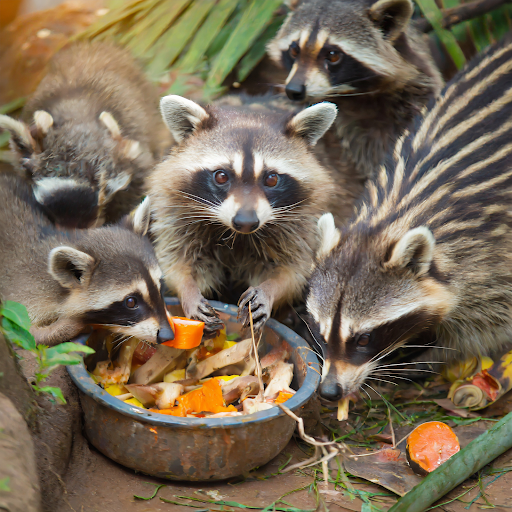The animal kingdom is a diverse and fascinating realm where creatures have evolved to adapt to their environments in remarkable ways. One of the most defining aspects of an animal's life is its diet. Animals can be categorized into three primary dietary groups: herbivores, carnivores, and omnivores. Each group has its unique characteristics and members, which we'll explore in this article.
Herbivores:
Herbivores are animals whose primary diet consists of plant material. They've adapted to efficiently extract nutrients from vegetation. Their digestive systems are designed to break down cellulose and extract energy from plants. Some well-known herbivores include:
1. Giraffes: These towering mammals use their long necks to reach high branches for leaves.
 |
| Giraffes | Image created by Firefly |
2. Cows: Ruminants like cows have multi-chambered stomachs to ferment and digest cellulose.
 |
| Cow | Image created by Firefly |
3. Rabbits: These small mammals have specialized teeth for efficient plant consumption.
 |
| Rabbits | Image created by Firefly |
Carnivores:
Carnivores are creatures that primarily consume meat. Their bodies are adapted for hunting, capturing, and digesting other animals. They have sharp teeth and claws, keen senses, and efficient digestive systems for processing animal proteins. Some examples of carnivores are:
1. Lions: Apex predators, lions hunt in coordinated groups to take down large prey.
 |
| Lions | Image created by Firefly |
2. Bald Eagles: These birds of prey have powerful talons and keen eyesight for hunting fish.
3. Komodo Dragons: These large lizards are formidable predators in their ecosystems.
Omnivores:
Omnivores are versatile eaters; they consume both plants and animals. They've adapted to a wide range of food sources and often exhibit varied feeding strategies. Common omnivores include:
1. Bears: From berries to salmon, bears are opportunistic eaters.
 |
| Bears | Image created by Firefly |
2. Humans: We have the flexibility to consume a wide variety of foods.
3. Raccoons: These clever critters eat everything from fruits to insects.
 |
| Raccoons | Image created by Firefly |
Adaptations and Evolution:
Animals become herbivores, carnivores, or omnivores through evolution and adaptation to their environments. These dietary choices are often linked to the availability of food sources, anatomy, and ecological niches. For example, herbivores have long digestive tracts to maximize nutrient extraction from plant matter. Carnivores have sharp teeth for tearing flesh, and omnivores have versatile dentition for a mixed diet.
Summary:
The animal kingdom showcases the incredible diversity of dietary preferences. Herbivores, carnivores, and omnivores each play a vital role in their ecosystems, influencing plant growth, regulating prey populations, and contributing to the intricate web of life on Earth. Understanding these dietary categories not only enhances our knowledge of the natural world but also underscores the importance of preserving biodiversity and the delicate balance of nature. your text here:

